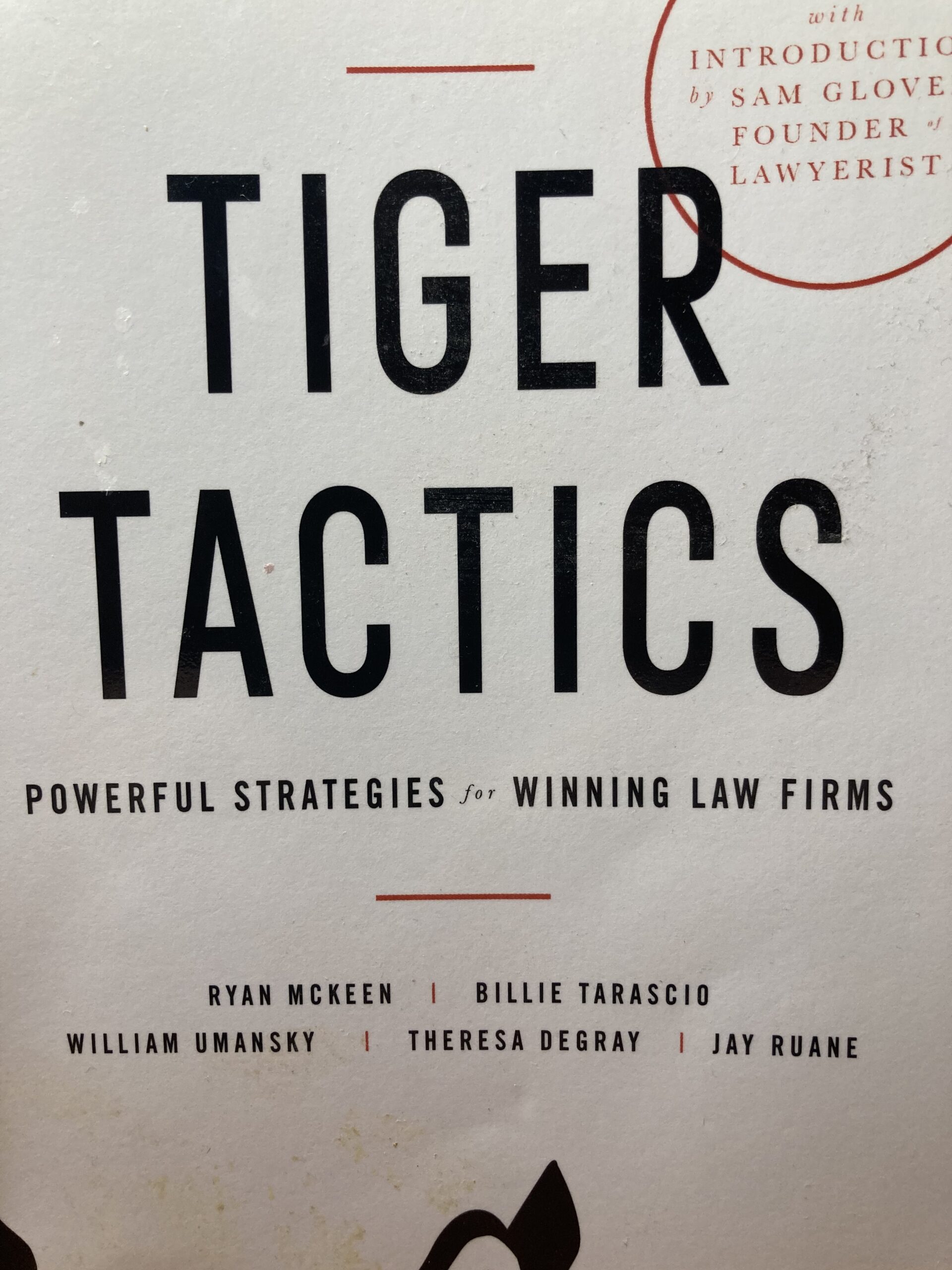Reading List 2020 (January) — Tiger Tactics

1. What is Tiger Tactics?
In January, I read Tiger Tactics: Powerful Strategies for Winning Law Firms. Tiger Tactics is a book written by five practicing lawyers. It discusses various systems other attorneys implemented to open and operate a thriving law practice. After all, practicing law, by itself, is hard. But, adding the impossible task of running a law practice — making all decisions from billing, services, client intake protocol, filing system, calendar tickler system, operating hours, etc. — makes practicing law almost impossible. This book surveyed five attorneys’ perspective on how to start, manage, market, and grow a law practice. It spoke of each attorney’s failures, expounding upon what works, what didn’t, what was a good investment of time or money, what was a poor investment, and an overall strategy to day-to-day, client-to-client operations. The authors differed on certain aspects, indicating that, just like the practice of law, each attorney’s individual practice needs to be tailored to that attorney’s individual needs. After all, what works in urban settings may not apply or be practical in a rural setting.
2. Why did I read this book?
Each year, Renee’ and I attend various continuing legal education events. Some are focused on law office management. This book was recommended at one such seminar. So, Renee’ purchased this book, along with others. Being a solo practitioner, I don’t have another attorney to “bounce ideas off of.” So, by reading the perspectives of other attorneys from other parts of the country, I can glean important insight without having to “reinvent the wheel.” After all, we have finite time. I don’t want to devote time, energy, and resources towards a means that will not achieve my desired ends.
3. Themes gleaned from the book
The basic message from this book is there is several ways to run a law office. But, the important thing to do is to have systems in place that best serve your client base. Your systems should be set up and implemented in such a way as to ensure that your clients (the clients you want to have) can find you and you can expediently and competently serve them. Every step of the client interaction process from initial phone call to final result should be thought out, planned, and prepared. That process should be conveyed to the client every time he or she interacts with your office. Lastly, clients want to know that you are working on his or case. A one sentence letter stating that “nothing has changed”, being mailed (or emailed) on a regular basis to your client speaks volumes and means so much to your client.
4.My next reading adventure?
This book came out in February 2019. A lot of themes in this book reminded me of Simon Sinek’s, Start with Why: How Great Leaders Inspire Everyone to Take Action and Jay G. Foonberg’s How to Start & Build a Law Practice. I have previously read both books. But, Foonberg’s book hasn’t been updated since June 2004. In addition, the author, Jay Foonberg, will turn 85-years-old this year. So, I wondered how the “younger lawyers’ advice” recorded in Tiger Tactics compares to a book that hasn’t been updated for 16 years but considered by many as the book when it comes to law office management. After all, a lot has changed during that period of time. So, as I closed Tiger Tactics as set it gently on the book shelf, I had two directions I wanted to go. First, I wanted to read Simon Sinek’s new book, The Infinite Game and then revisit that familiar law office management classic.
“Reading for the sheer delight of it — reading at whim– is therefore one of the most important kinds of reading there is.” — Alan Jacobs, The Pleasures of Reading in an Age of Distraction.